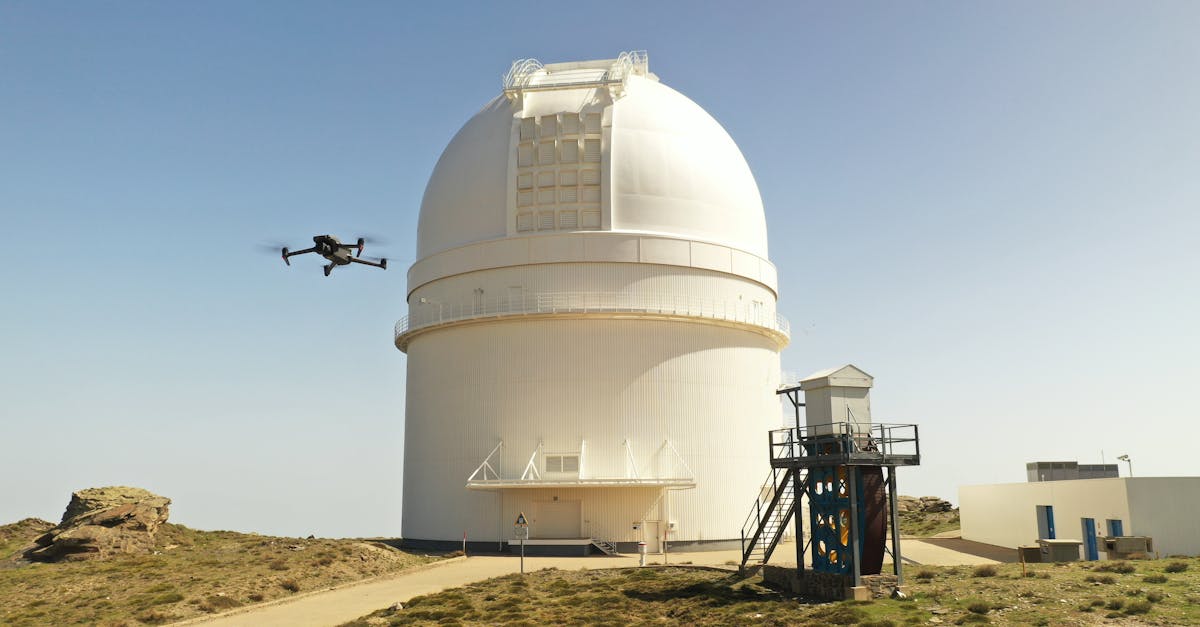Unveiling the Wonders of South America’s Astronomical Marvels: Are they the Gateway to Unraveling the Universe’s Mysteries? Join us on a cosmic journey through the celestial treasures of South America to explore the infinite possibilities that lie beyond our world.
Unveiling the Wonders of South America’s Astronomical Marvels

Exploring the Mysteries of South America’s Celestial Wonders
Venture into the night skies of South America, and you will be greeted by a celestial tapestry unlike any other. The region’s astronomical marvels have captivated stargazers and scientists for centuries, offering a glimpse into the vastness and beauty of the universe.
Atacama Desert: Window to the Cosmos
Nestled in Chile, the Atacama Desert stands as a premier destination for astronomers and space enthusiasts. Its high altitude, clear skies, and minimal light pollution make it an ideal location for stargazing. The desert is home to world-class observatories such as the European Southern Observatory’s Very Large Telescope (VLT) and the Atacama Large Millimeter/submillimeter Array (ALMA), enabling researchers to peer deep into the cosmos.
Nazca Lines: Ancient Astronomical Enigmas
In the arid plains of Peru lies the enigmatic Nazca Lines, ancient geoglyphs etched into the desert floor. While their exact purpose remains a mystery, some researchers believe these giant figures and intricate patterns may have held astronomical significance, serving as a giant celestial calendar or a means of communication with the heavens.
Galápagos Islands: Celestial Harmony in a Natural Paradise
Off the coast of Ecuador, the Galápagos Islands offer not only a haven for unique wildlife but also a celestial spectacle after nightfall. Away from urban light pollution, visitors can marvel at the brilliance of the night sky, dotted with constellations and shooting stars. The islands’ pristine environment provides an unparalleled backdrop for celestial observation.
Incan Astronomy: Ancient Wisdom in the Andes
The ancient Incas of South America were skilled astronomers, aligning their temples and structures with celestial events. Machu Picchu, the iconic Incan citadel perched high in the Andes, showcases this astronomical expertise with its carefully positioned architecture that aligns with solstices and equinoxes. Their understanding of the stars and planets is a testament to their reverence for the cosmos.
Transcending Borders: Connecting with the Universe
South America’s astronomical marvels not only inspire awe and wonder but also serve as a reminder of our place in the universe. By exploring these celestial wonders, we can connect with cultures past and present, bridging the gap between ancient wisdom and modern scientific exploration. Whether in the desolate deserts of Chile or the vibrant jungles of Brazil, the night sky above South America beckons us to gaze upwards and ponder the mysteries of the cosmos.
Exploring the Impact of South America’s Astronomical Discoveries on the Universe

South America, a land of rich cultural heritage and stunning natural beauty, is also home to some of the most fascinating astronomical discoveries that have greatly impacted our understanding of the universe. From ancient civilizations’ observatories to modern-day research facilities, the continent has played a significant role in unraveling the mysteries of the cosmos.
ancient astronomical wisdom
Before the arrival of Europeans, indigenous civilizations in South America already had a deep connection with the stars and celestial bodies. The Incas, for example, built sophisticated observatories like the famous Machu Picchu, where they studied the movements of the sun and the stars with remarkable precision. Their astronomical knowledge allowed them to develop calendars and agricultural practices based on celestial events, showcasing the intricate link between the cosmos and human life.
modern astronomical observatories
Today, South America is home to cutting-edge astronomical observatories that continue to push the boundaries of our understanding of the universe. Chile, in particular, boasts some of the world’s most advanced telescopes, nestled in the high-altitude deserts of the Atacama region. Observatories like the Very Large Telescope (VLT) and the Atacama Large Millimeter/submillimeter Array (ALMA) have revolutionized our exploration of distant galaxies, black holes, and other celestial phenomena.
contributions to space exploration
The astronomical discoveries made in South America have not only advanced our scientific knowledge but have also contributed to space exploration efforts. The region’s unique vantage point in the Southern Hemisphere allows astronomers to observe parts of the universe inaccessible from northern observatories. This global collaboration has led to groundbreaking discoveries and a more comprehensive view of the cosmos.
preservation of astronomical heritage
Recognizing the importance of preserving its astronomical heritage, South America has taken steps to protect its ancient observatories and promote astronomical tourism. Sites like the Nazca Lines in Peru, believed to have astronomical significance, attract visitors interested in exploring the intersection of astronomy and ancient cultures. By safeguarding these sites, South America ensures that future generations can continue to marvel at the wonders of the cosmos.
In conclusion, South America’s astronomical marvels have left an indelible mark on the scientific community and our collective understanding of the universe. From the wisdom of ancient civilizations to the cutting-edge research facilities of today, the continent continues to be a source of inspiration for astronomers and stargazers alike.
The Role of South American Observatories in Advancing Astrophysics

unveiling astronomical wonders with south american observatories
south american observatories, such as chile’s la silla observatory and brazil’s pico dos dia observatory, have played a pivotal role in advancing astrophysics through their cutting-edge technology and strategic locations. these facilities offer astronomers a clear view of the southern hemisphere sky, providing unique opportunities to explore celestial phenomena that are not easily observable from other parts of the world. by harnessing the power of these observatories, scientists can delve into the mysteries of the universe and uncover new insights into the cosmos.
contributions to astrophysical research and beyond
the presence of state-of-the-art telescopes, like the chandra observatory located in chile’s atacama desert, has enabled researchers to delve into the depths of space and observe phenomena such as black holes, neutron stars, and supernovae in unprecedented detail. the data collected from these observatories not only contributes to our understanding of the universe but also aids in the development of new technologies and innovations that have far-reaching implications beyond astronomy.
collaborative efforts and international partnerships
south american observatories often collaborate with international organizations such as nasa and the european southern observatory to further enhance their research capabilities. these partnerships allow for the sharing of resources, expertise, and data, facilitating groundbreaking discoveries in the field of astrophysics. by fostering a spirit of collaboration and cooperation, south american observatories are at the forefront of scientific research and innovation in the global astronomical community.
educational initiatives and public outreach
beyond scientific research, south american observatories also play a crucial role in educational initiatives and public outreach programs. by engaging with schools, universities, and the general public, these observatories spark interest in astronomy, inspire the next generation of scientists, and promote scientific literacy. through guided tours, workshops, and outreach events, they offer a glimpse into the fascinating world of astrophysics, making complex concepts accessible to audiences of all ages and backgrounds.
exploring new frontiers in astrophysics
as we continue to push the boundaries of astrophysical research, south american observatories stand as beacons of discovery, offering unparalleled opportunities to explore the wonders of the cosmos. their state-of-the-art facilities, collaborative partnerships, and dedication to education ensure that they will remain at the forefront of advancing astrophysics for years to come. by harnessing the power of these astronomical marvels, scientists are poised to unravel the mysteries of the universe and inspire awe and wonder in generations to come.
Unlocking the Secrets of the Universe with South America’s Astronomical Observations

peering into the cosmos from south america
south america’s diverse landscapes provide a unique vantage point for astronomers to unlock the mysteries of the universe. with high-altitude observatories nestled in the andes mountains and clear skies unobstructed by light pollution, researchers have a clear view of the stars, planets, and deep-space phenomena.
unveiling celestial wonders with state-of-the-art technology
equipped with cutting-edge telescopes and imaging techniques, scientists in south america can capture breathtaking images of astronomical marvels. from distant galaxies and nebulae to exoplanets and black holes, these observations offer insights into the vastness and complexity of the cosmos.
charting the course of astronomical discoveries
through collaborative efforts with international space agencies and research institutions, south america plays a vital role in advancing astronomical research. discoveries made from these observations contribute to our understanding of the universe’s origins, evolution, and composition.
preserving the dark skies for future exploration
efforts to protect south america’s dark skies are essential for maintaining optimal conditions for astronomical observations. initiatives promoting sustainable tourism and light pollution reduction help preserve the clarity and visibility needed for groundbreaking astronomical discoveries.
inspiring a sense of wonder and curiosity
by sharing the beauty and complexity of the cosmos through outreach programs and educational initiatives, south america’s astronomical community sparks interest in astronomy and space exploration. inspiring the next generation of scientists and explorers, these efforts ensure a legacy of continued discovery in the field of astronomy.
